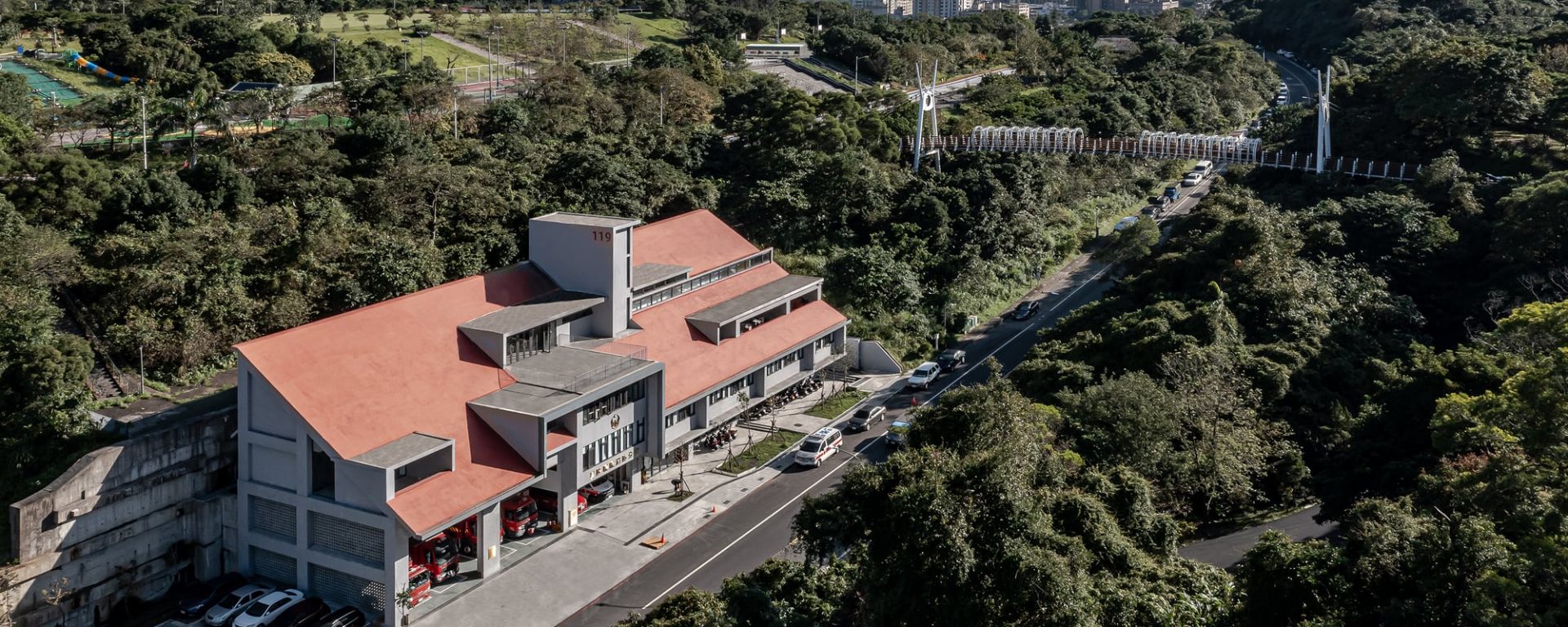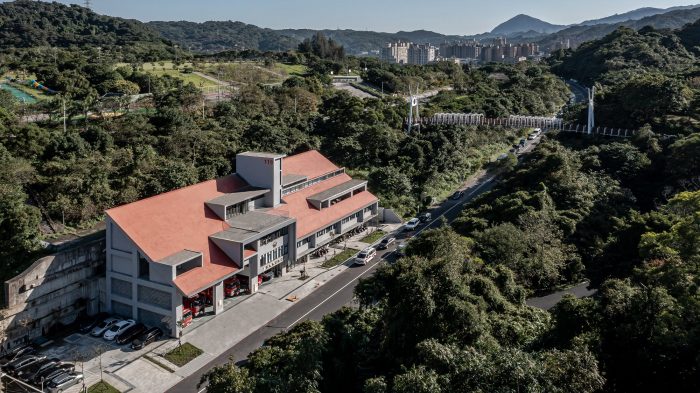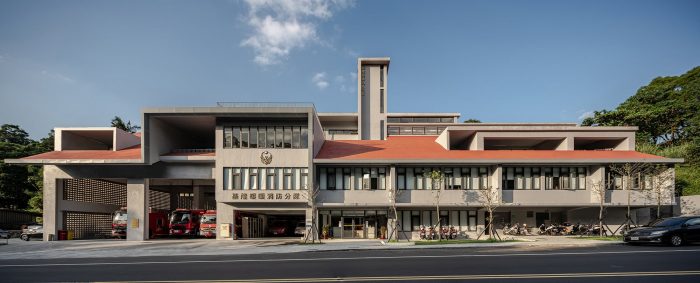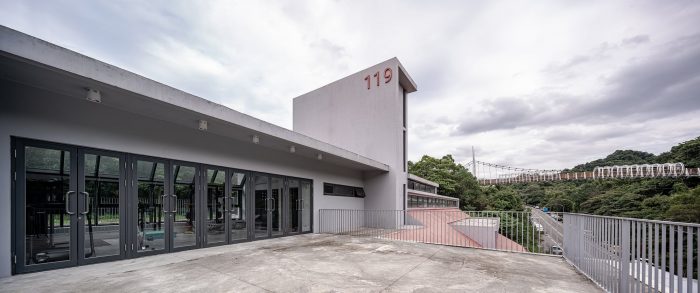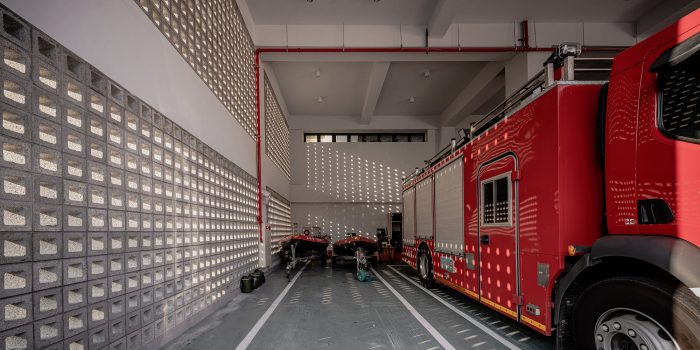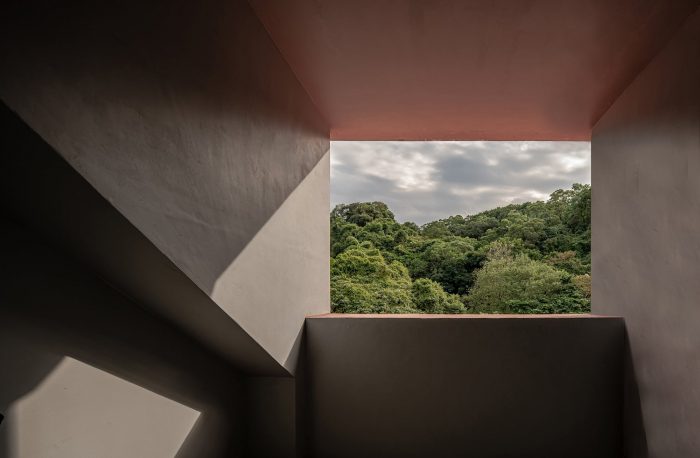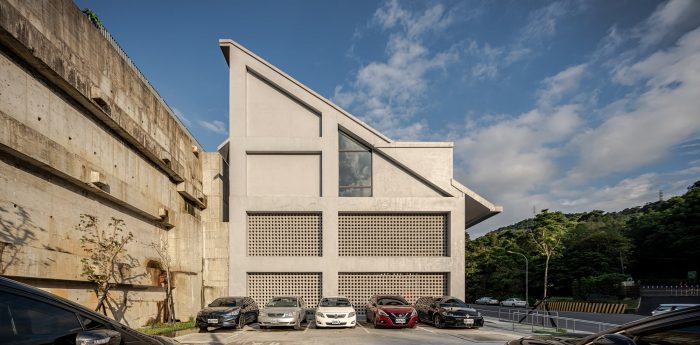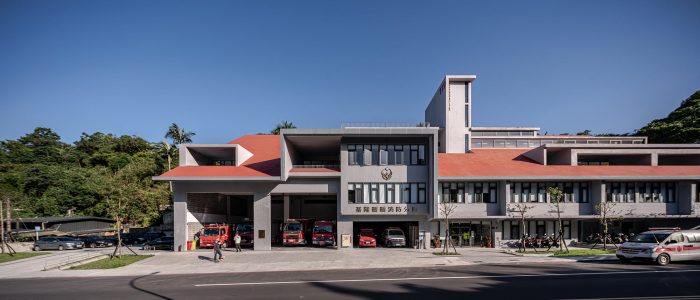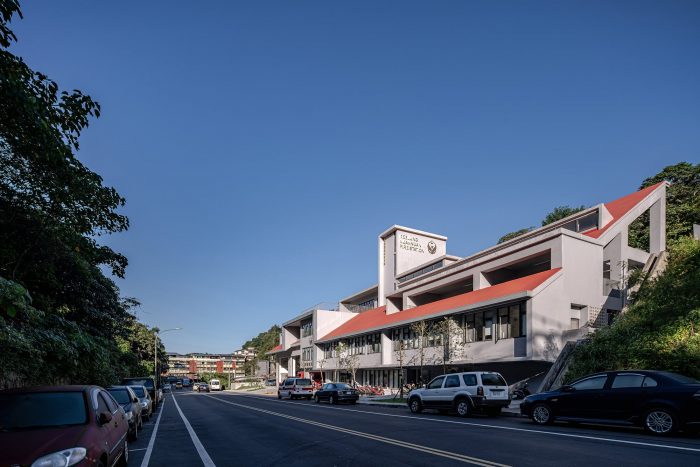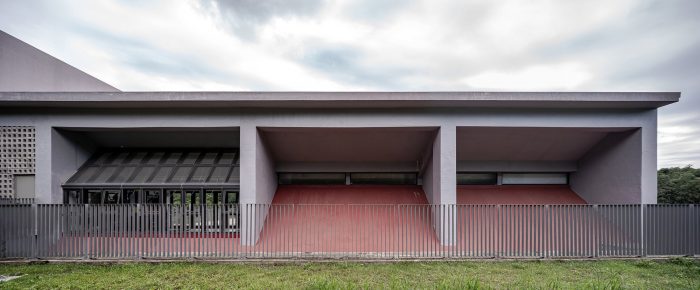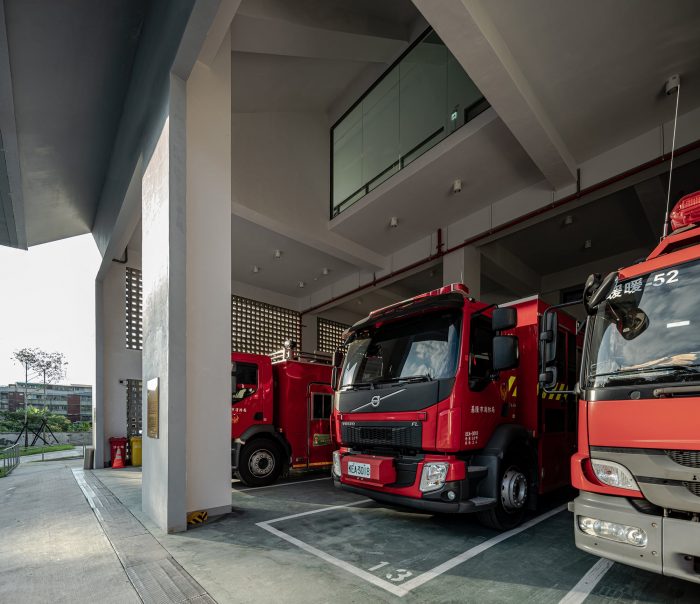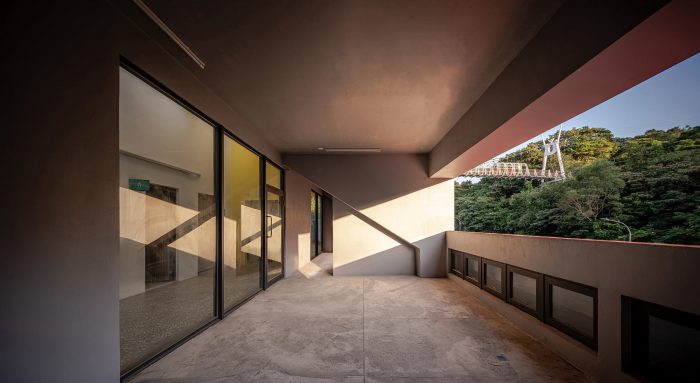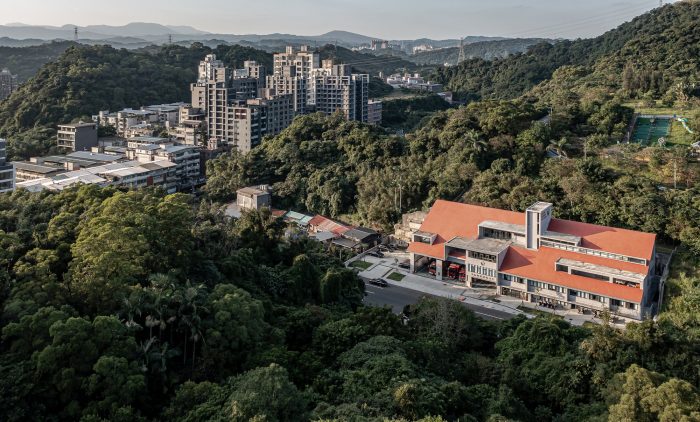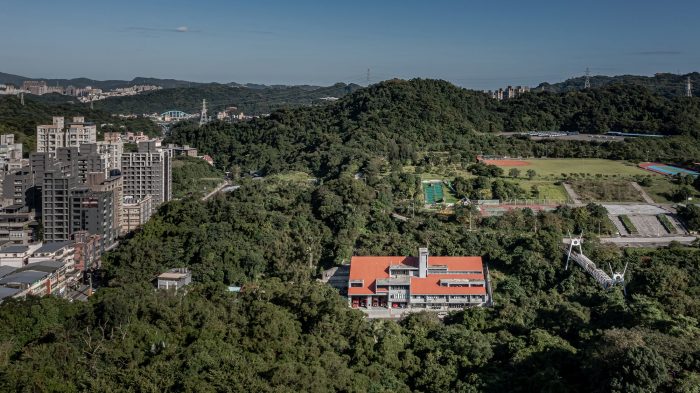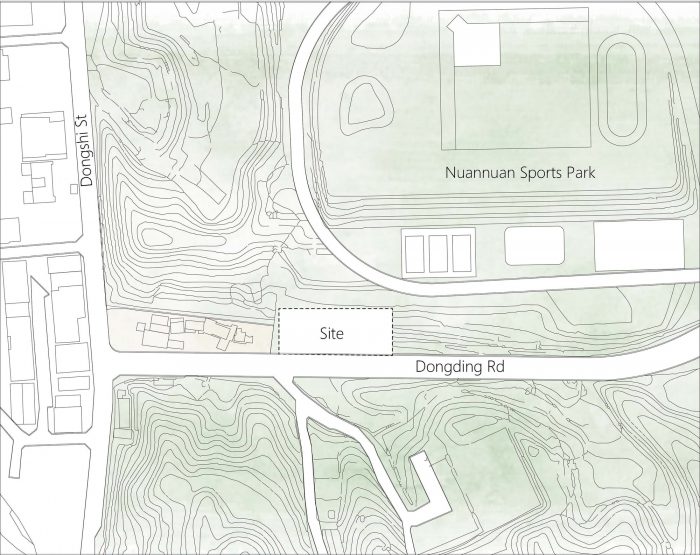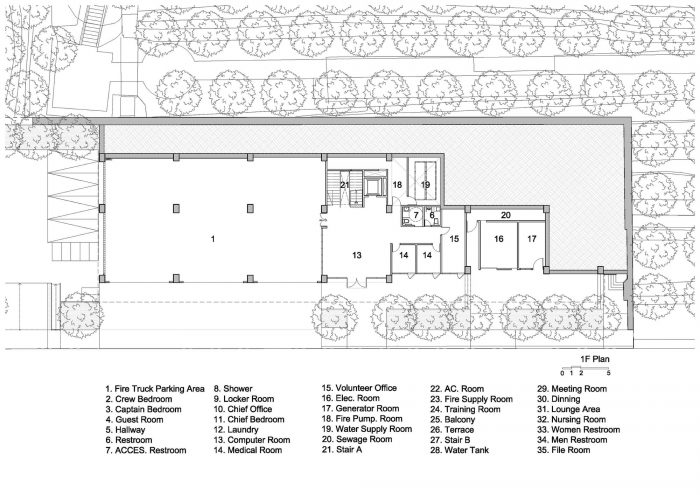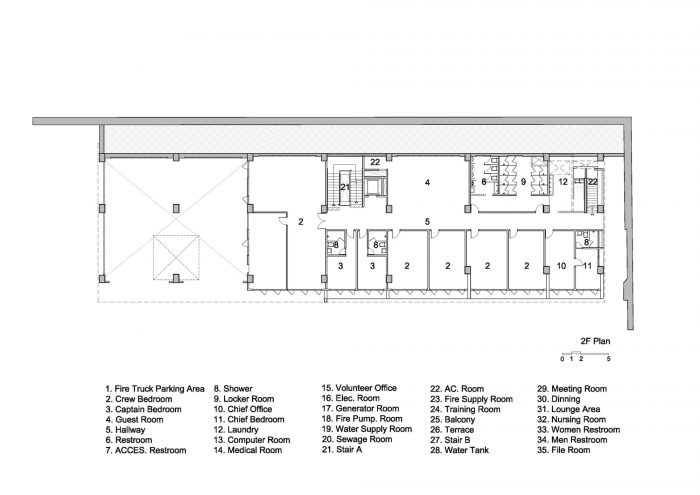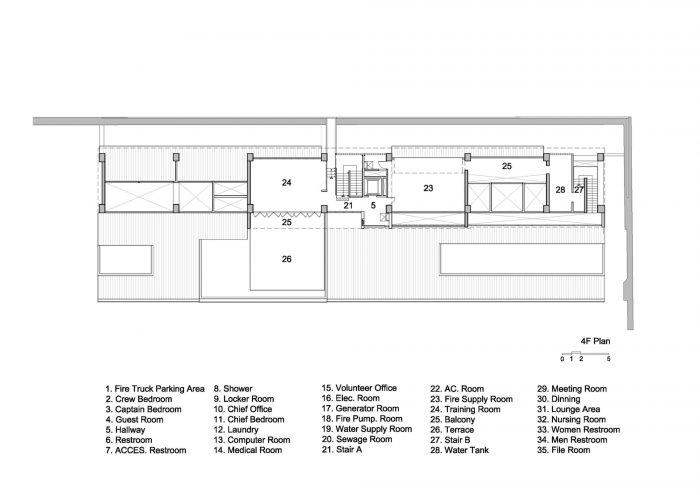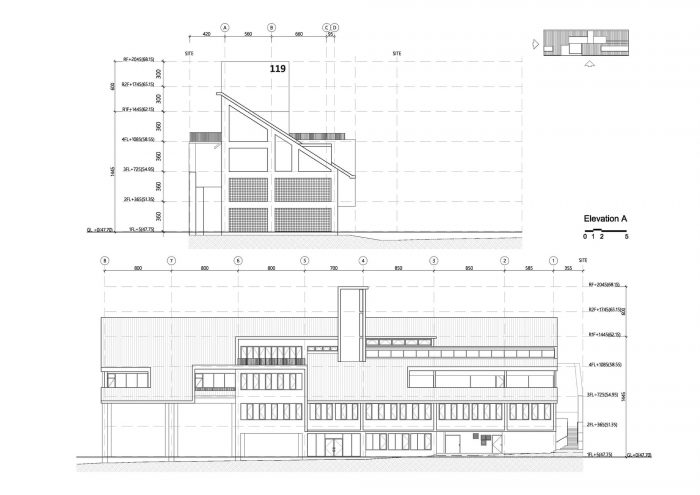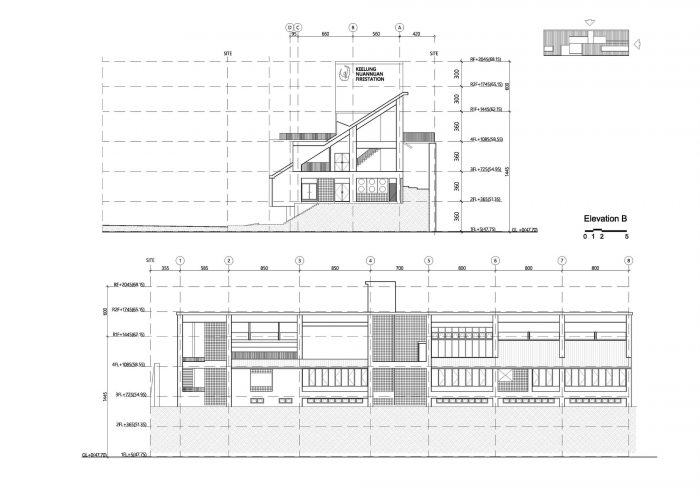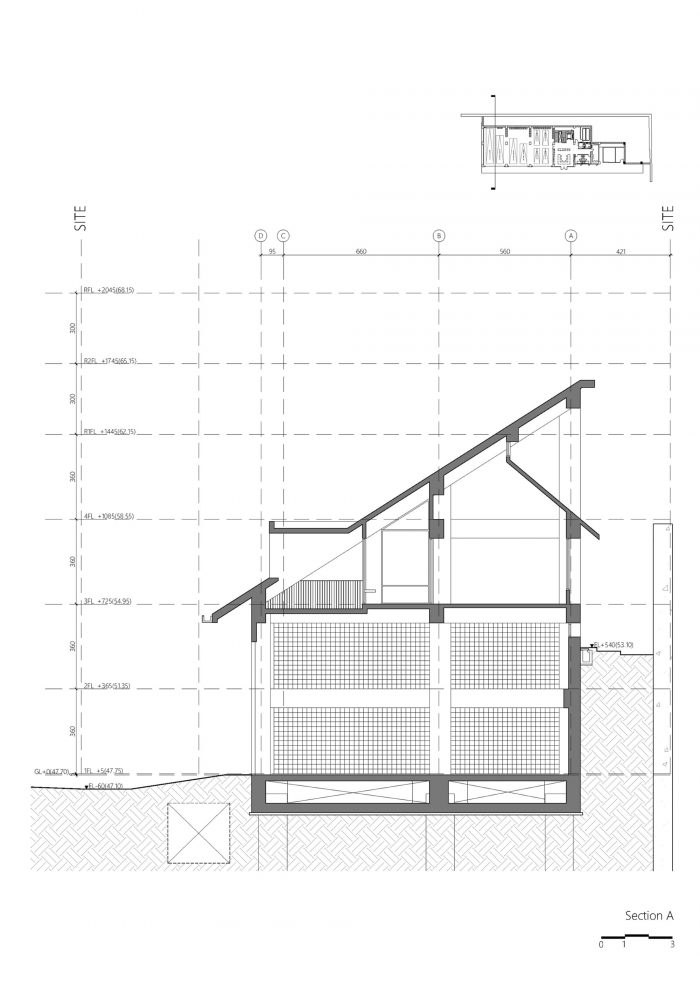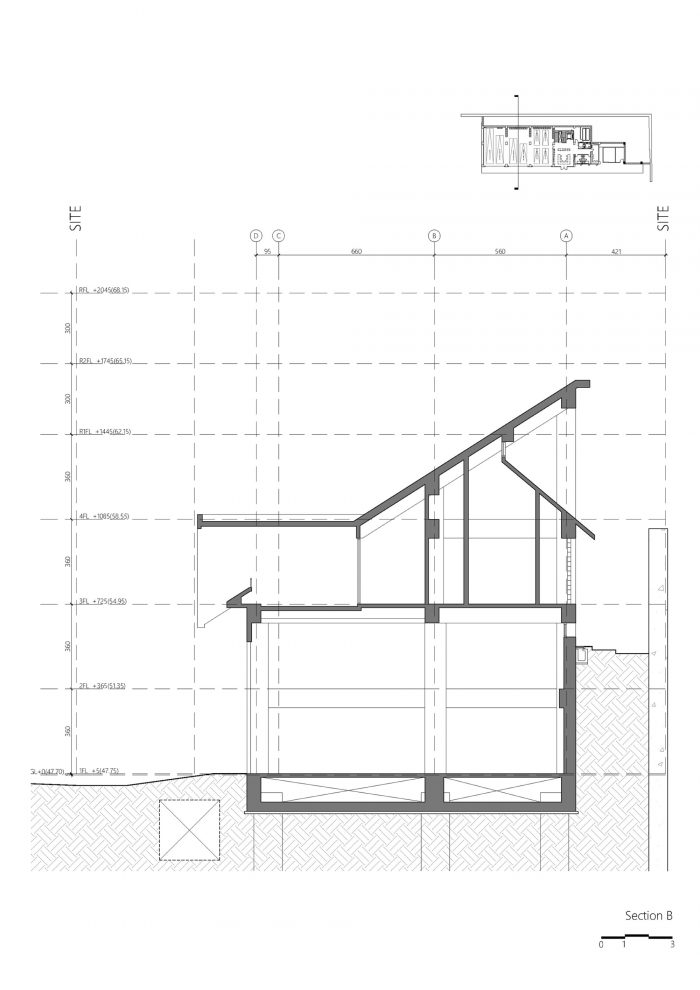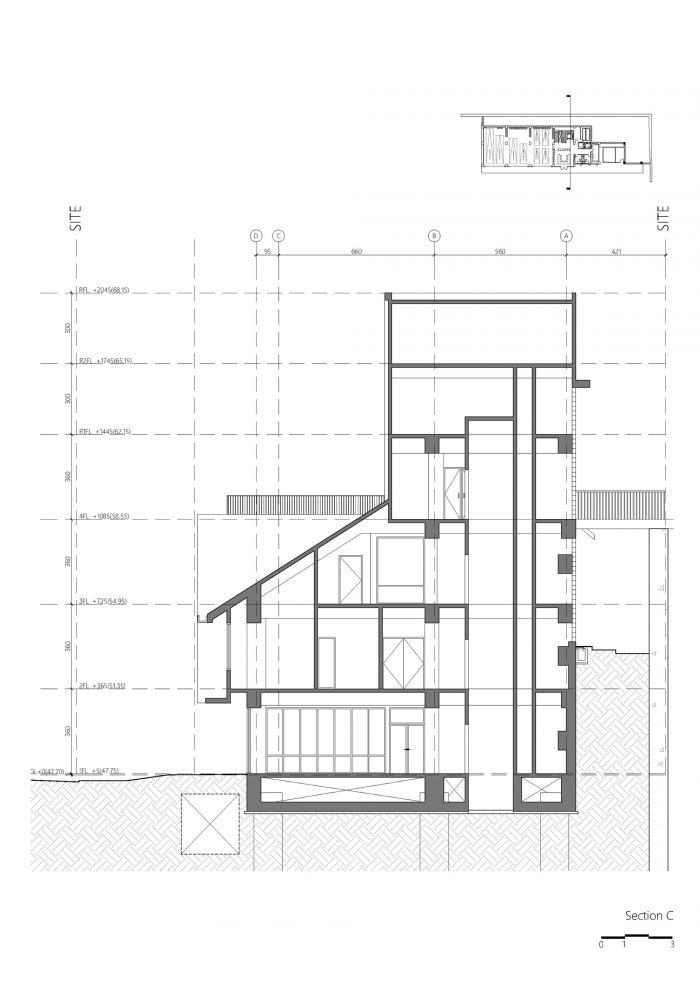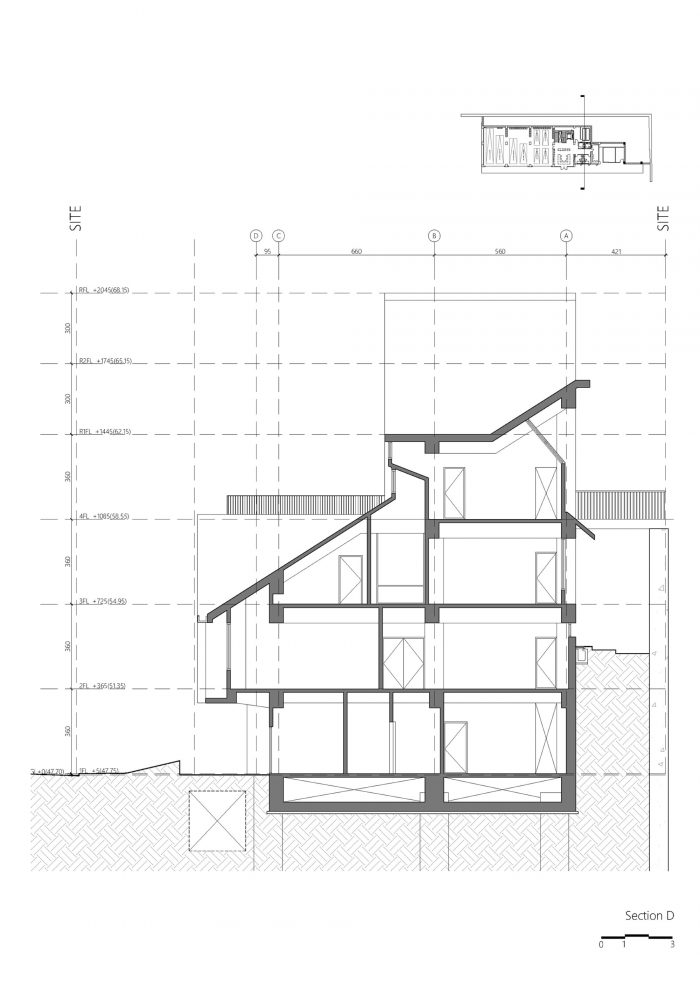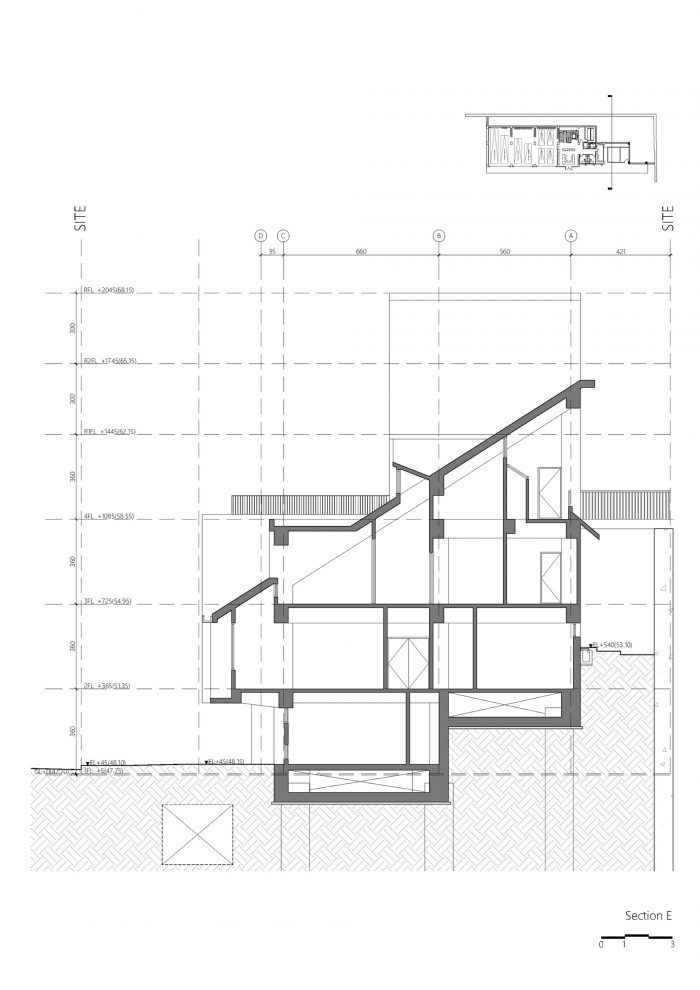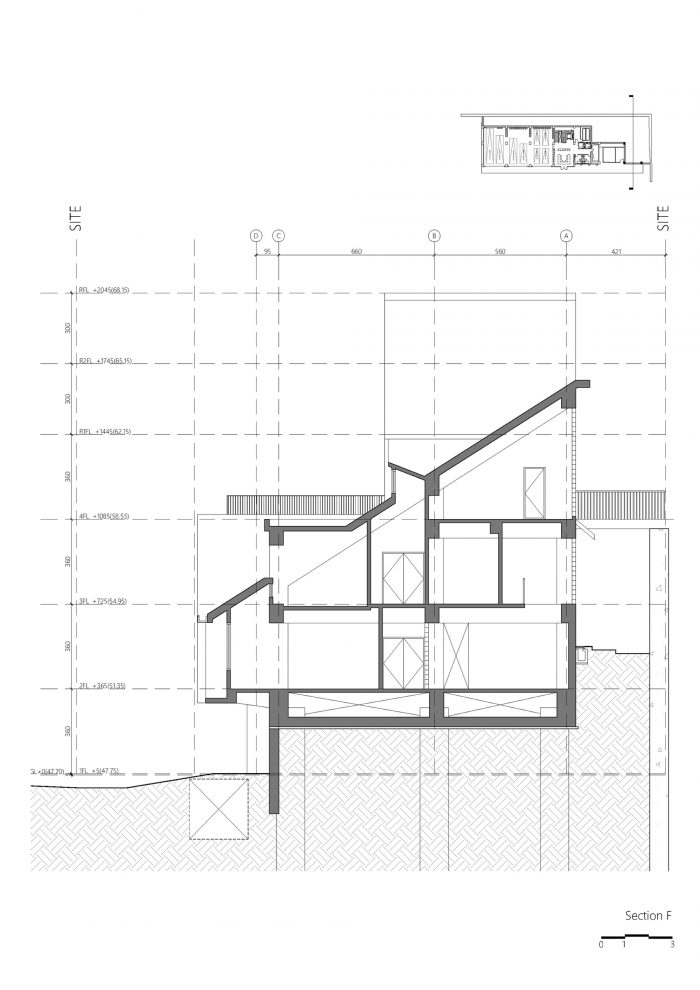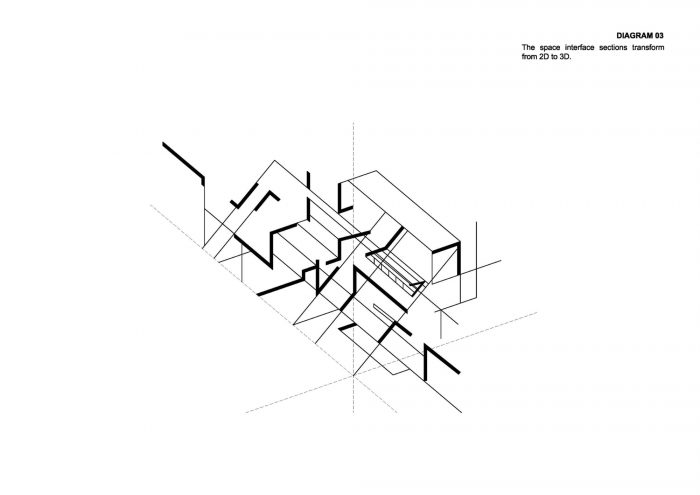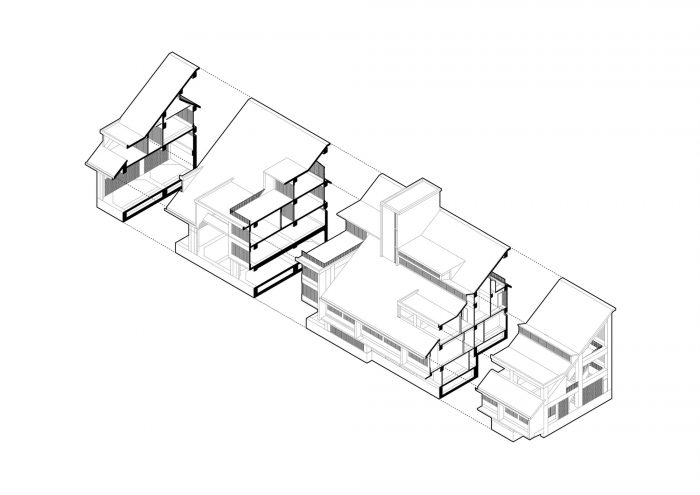基隆是台湾本岛最北部的城市,是台湾北部最早开发的城市之一。它是一个多山多雨的港口城市,90%以上是山地。这些沿海地区和陡峭的山丘在城市中形成了美丽的自然景观,但在建筑上却是具有挑战性的地点。气候和地貌导致了低洼地区的洪水平面和山区的滑坡。因此,基隆市消防局暖暖分局的选址是在老城区的边缘,与丘陵的自然环境交接。
Keelung, the northmost city on Taiwan’s main island, is one of the earliest developed cities in northern Taiwan. It is a mountainous and rainy harbor city with more than 90% hills. Those coastal areas and steep hills form a beautiful natural landscape in the city yet are architecturally challenging sites. The climate and landscape result in flood planes in lower areas and landslides in the mountainous areas. Thus, the site selection of the Keelung City Fire Department Nuannuan branch is on the edge of the old city, interfacing the hilly natural environment.
场地位于平均坡度为50%的陡峭山坡上,城市景观与自然景观独特地融为一体。基隆居民习惯于生活在这个潮湿多雨的山区。这个地区有一种原生的建筑风格,在台湾一般被称为 “山地住宅”,我们将其作为主要的建筑元素,以适应当地的景观和气候。大斜屋顶是山地皮肤的一个新层。阳台和开口在景观和建筑之间形成独特的空间。有人和活动通过这个新的层次进出。
The site is located on a steep hill of an average 50% slope where the urban landscape is uniquely blending into the natural landscape. The Keelung residents are used to living in this humid rainy mountain. There is an indigenous building style of this area, generally called “mountain house” in Taiwan, that we have taken into our main building elements to adapt to the local landscape and climate. The big sloping roof is a new layer of the mountain skin. The balconies and openings form unique spaces in between the landscape and the building. There are people and activities going in and out through this new layer.
在台湾的多雨山区,渗漏一直是建筑维护中最具挑战性的部分。而身处地震区,对防水层来说更是雪上加霜。这种大坡度的屋顶不仅顺应了山地景观,而且最大限度地减少了水在屋顶上的停留时间,因此,改善了雨水的排放。低矮的屋顶边缘也顺应了当地生活环境的尺度。阳台在夏天创造了额外的深度,以避免阳光直射,但仍然允许通风。在雨季,它为向天窗外的通风创造了气流。中央楼梯也作为烟囱来排放热空气。
In the rainy and mountainous areas of Taiwan, leakage has always been the most challenging part of building maintenance. And being in an earthquake region makes it worse for the waterproof layer. This big slope roof not only follows the mountain landscape but also minimizes the time of water staying on the roof, therefore, improving the rainwater drainage. The low roof edge also responds to the scale of the local living environment. The balconies create additional depth in the summer to avoid direct sunlight but still allow ventilation. In the rainy season, it creates the airflow for the ventilation going out towards the skylights. The central staircase also acts as the chimney to vent the hot air.
消防站可能是一个街区的一个非常重要的地标。设计必须是象征性的,但仍然要融入环境,它位于从公共交通站到体育公园的路上,就在项目现场的上方。因此,设计城市肌理和建筑街道层面的外部空间的界面是至关重要的。有连接的街道口袋提供了视觉引导和自然的遮阳避雨。人们也可以通过消防局旁边的景观小路进入公园。它在视觉上连接了东端的桥梁、公园和自然景观。这是一个消防站是居民生活的一部分的声明。
A fire station could be a very important landmark in a neighborhood. The design has to be symbolic yet still blend into the environment, it is on the path from the public transport stop to the sports park right above the project site. Therefore, it is crucial to design the interface of the urban texture and the exterior space of the street level of the building. There are connections of street pockets providing visual guidance and natural shades for rain or sun. People can also take the scenic path right by the fire station to access the park. It visually connects the east-end bridge, park, and natural landscape. It is a statement of the fire station is part of residents’ lives.
Architects: BBC Architects, Yen Partnership Architects
Area : 2045 m²
Year : 2021
Photographs :OS Studio
Lead Architects : Joe Lin, Yenling Chen, ChuanChih Chang (BBC Architects)
Structure : ChenHou Structural
Mechanical Engineering : MingChen Engineering
Civil Engineering : YuTung Engineering
Project Designers : ChiaShen Hong, Chihon Chen, Neil Jiang (BBC Architects)
General Contractor : WongDing Constrcution
City : Nuannuan District
Country : China

